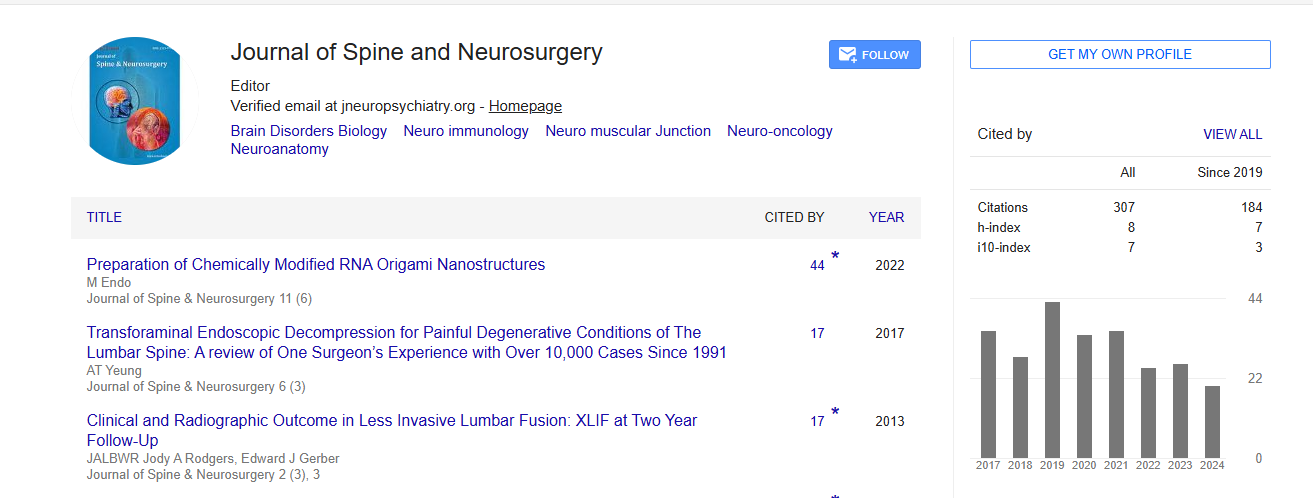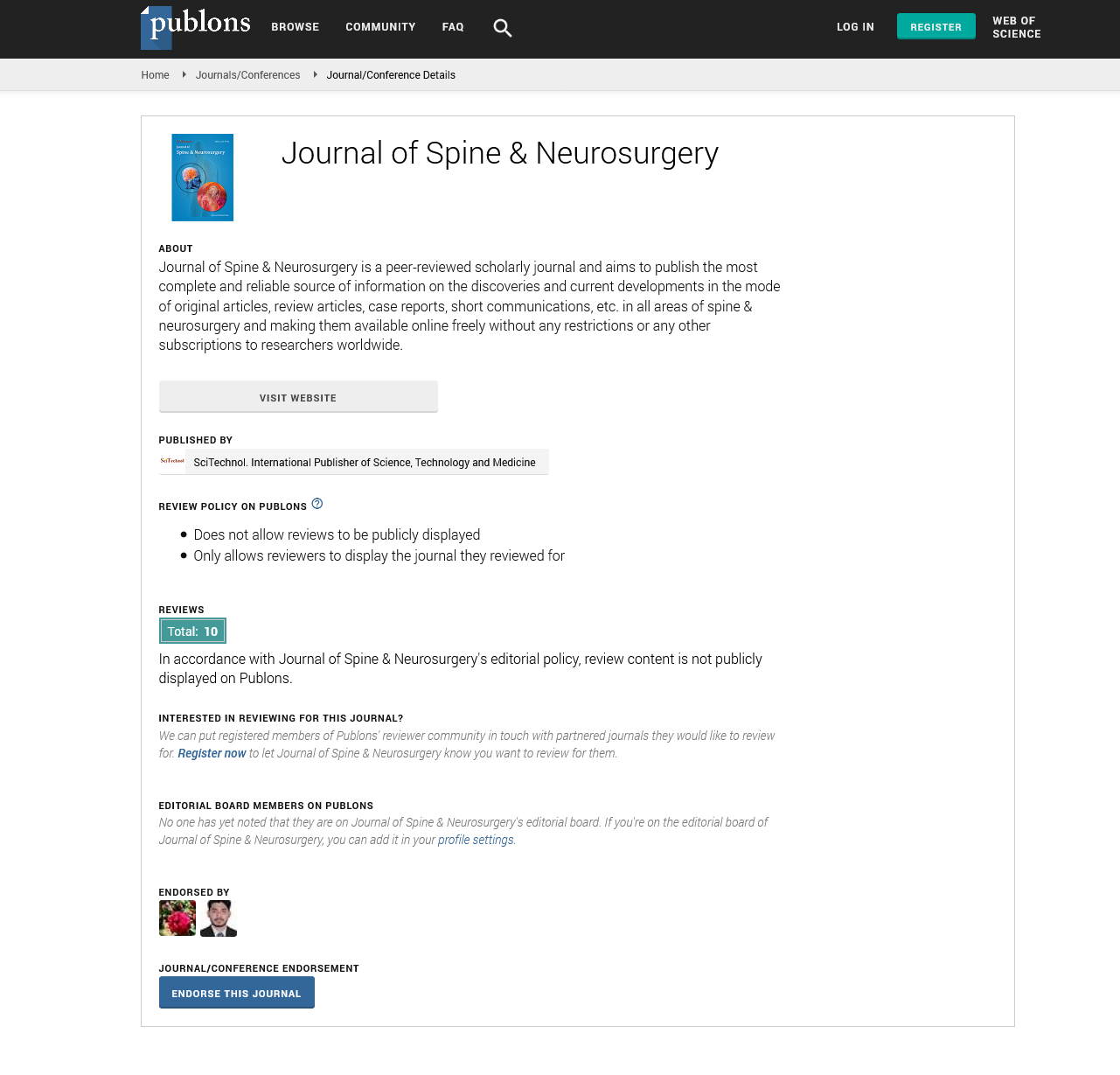Neuroendoscopy in combating paediatric pathologies: A single centre review
Naavin Kumar Balakrishnan, Pulivendhan Sellamuthu and Nik Amin Sahid Nik Lah
Hospital Queen Elizabeth, Malaysia
University Malaysia Sabah, Malaysia
: J Spine Neurosurg
Abstract
The aim of this study is to review the indications and outcome of all pediatric neuroendoscopic procedures. This is a retrospective study done at Sabah Women and Children Hospital, Sabah between January 2011 and March 2018. All patients aged less than 12 years old who underwent neuroendoscopic procedures were included. Case notes were analyzed and data recorded. A total of 80 pediatric patients were recruited out of which 20 were neonates aged less than 6 months, 10 infants aged between 6 to12 months, 20 patients were between 1 to 5 years old, another 20 patients aged between 5 to 10 years and 10 patients were between 10 to 12 years old. Male to female ratio is 1:1.5. Commonest procedure is Endoscopic Third Ventriculostomy (ETV) in 39 patients and followed by endoscopic tumor biopsy or excision in 18 patients. Endoscopic exploration and examination with or without septum pellucidotomy was done in 14 patients and fenestration of cyst done in 9 patients. Ventriculoperitoneal shunt rates were lower with 17% in ETV group patients if compared to other treatment methods for hydrocephalus with 26% shunt dependency. Commonest biopsy histopathology of germinoma led to rapid initiation of chemotherapy if compared to classic route of open biopsy which is more invasive. To conclude neuroendoscopy is a useful tool and rapid technological advancement has broadened our use of neuroendoscopy especially venturing into the world of endoscopic assisted neurosurgery.
Biography
Naavin Kumar Balakrishnan is a Neurosurgery Medical Officer in Department of Neurosurgery, Hospital Queen Elizabeth, Kota Kinabalu, Sabah, Malaysia with special interest in neuoendoscopy.
E-mail: naavin.kb@gmail.com
 Spanish
Spanish  Chinese
Chinese  Russian
Russian  German
German  French
French  Japanese
Japanese  Portuguese
Portuguese  Hindi
Hindi 
